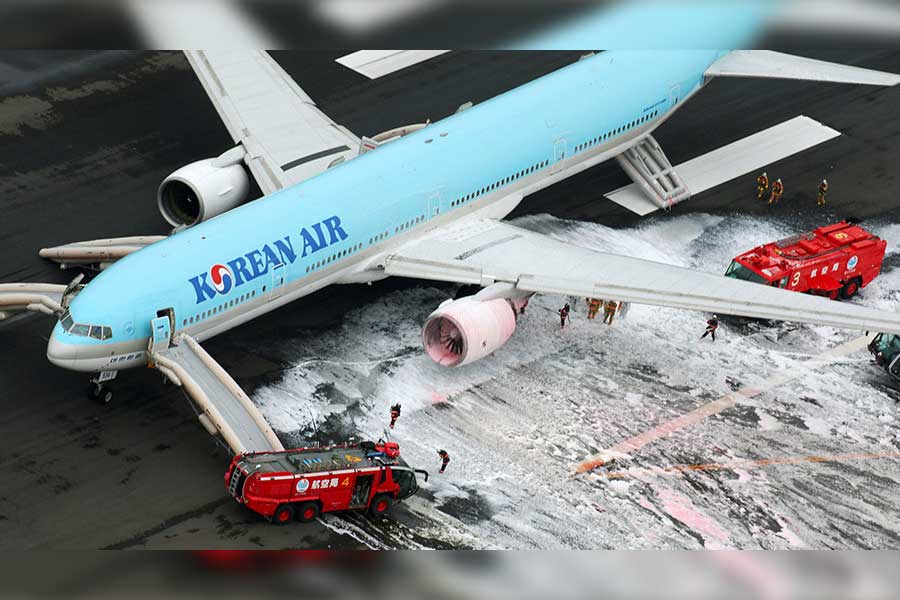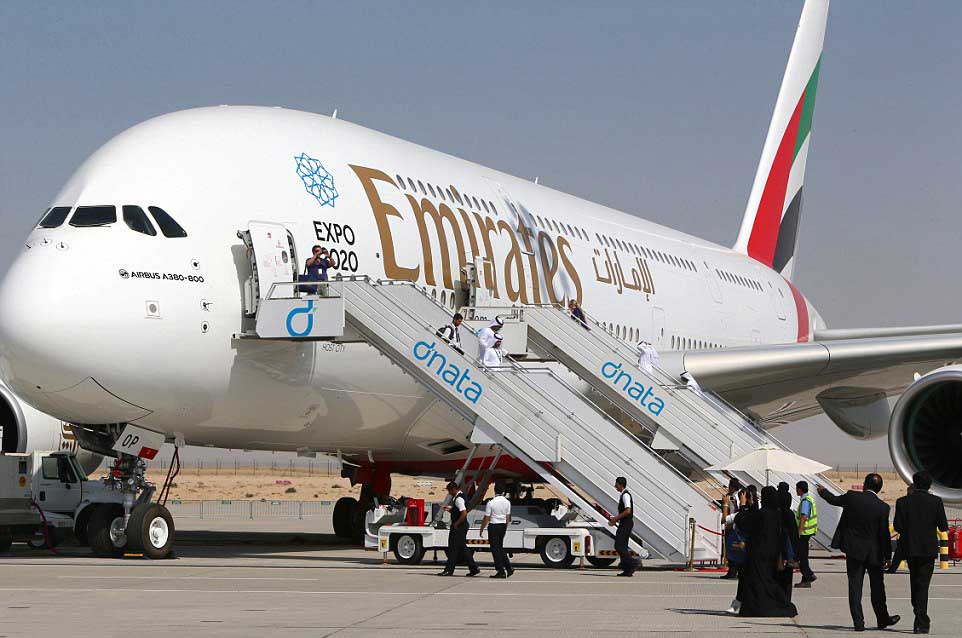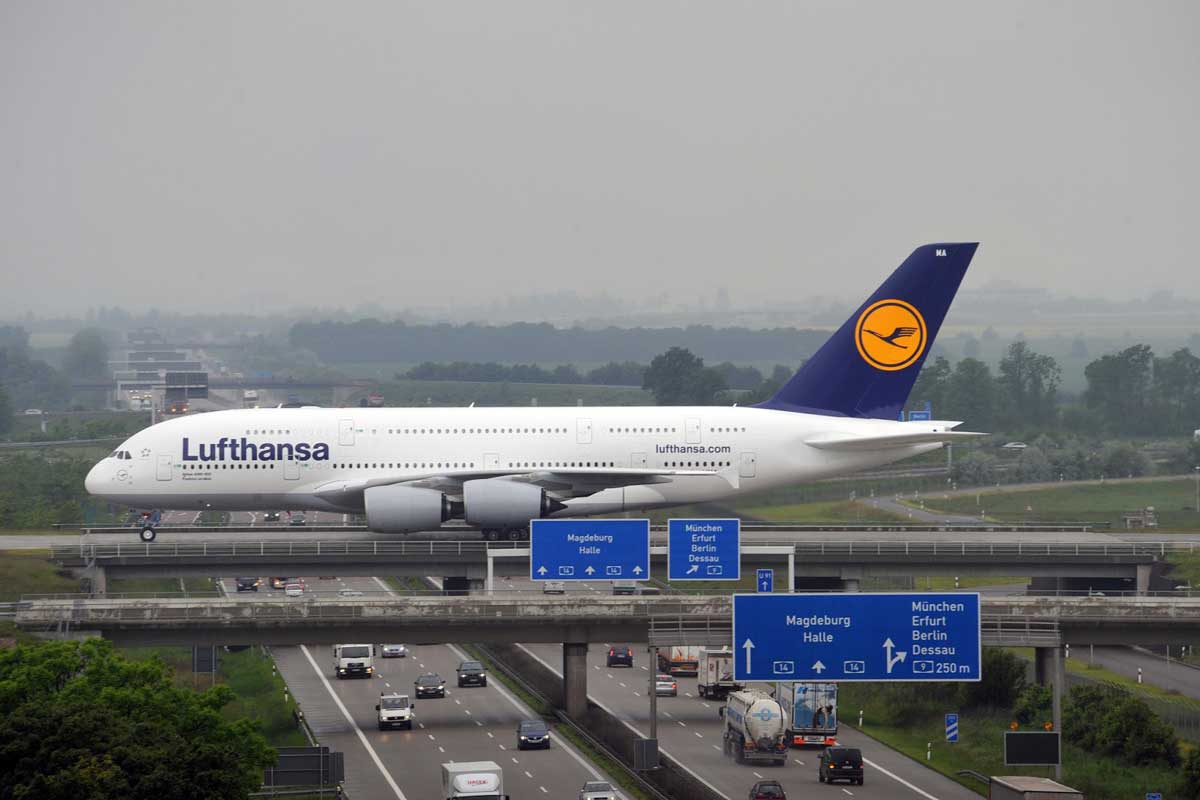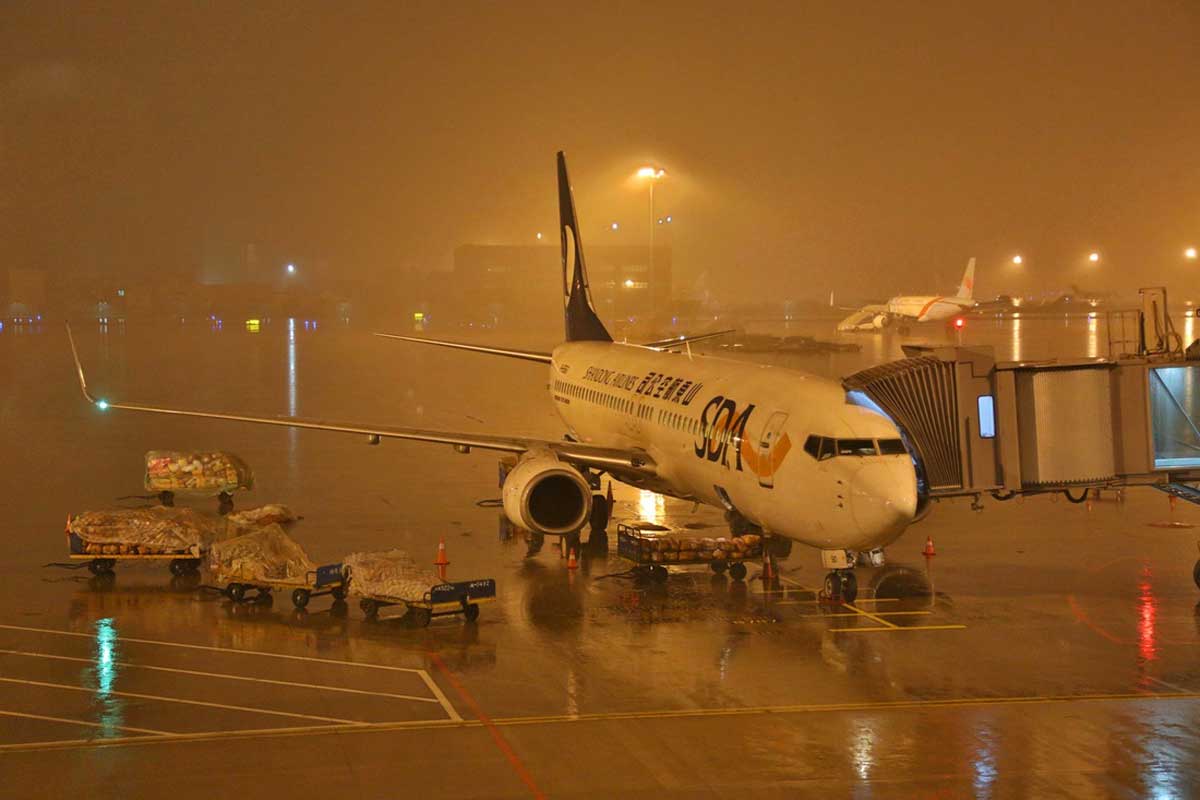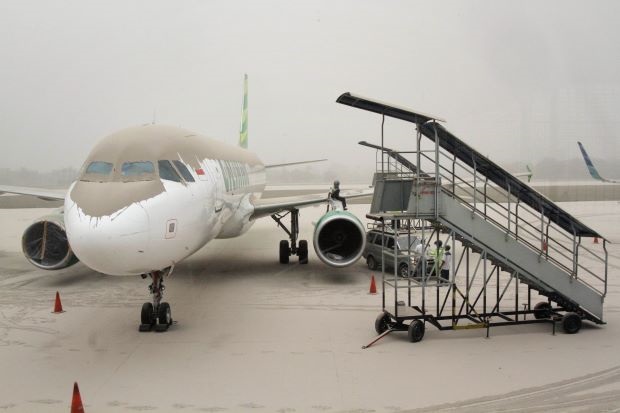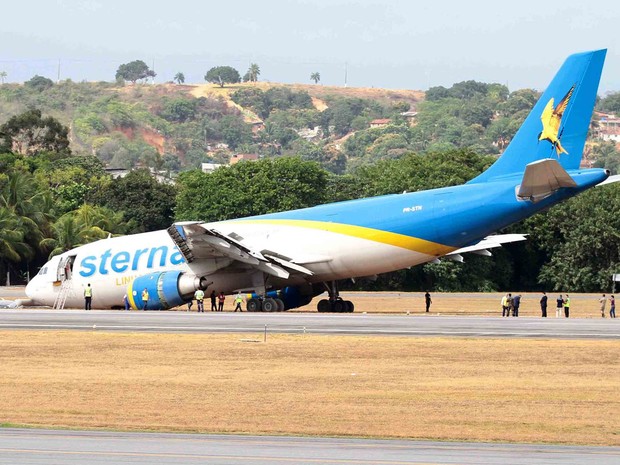In this part, you will tell me what you can see in this picture and what you think is happening in it. After that, I will ask you some questions. Look at the picture carefully. You may take a few moments to think before you start talking.
Are the instructions clear?
SUGGESTED INTERACTION:
ICAO 5: The Picture shows me a wide-body multi engined passenger jet that appears to be an Airbus A340, a Skyteam member, crossing an active runway while another twin engined jet is performing a go around certainly to avoid an accident.
According to the Picture, this is a runway incursion resulting to a near miss situation.
ICAO 4: First of all in this picture I can see a Wide Body multi-engined Aircraft and a Skyteam member crossing the active runway.
In addition to that, there is another aircraft on the final approach to land.
In the background of the picture, the weather is good.
In the foreground It’s possible to see the Runway Edge lights are on.
For sure, this is a typical case of runway incursion.
.
Examiner: What was happening before the Picture was taken?
SUGGESTED INTERACTION:
ICAO 5: Before the Picture was taken, the skyteam member aircraft might have suffered a misunderstood and crossed the active runway without clearance.
ICAO 4: Before the picture was taken, the Skyteam member aircraft was taxiing and due to some misunderstandings the crew entered the active runway without clearance.
Examiner: What do you think will happen next?
SUGGESTED INTERACTION:
ICAO 5: The Airbus A340 will be reported by crossing the runway without clearance and will probably carry on the operations while the twin-engined plane will come back for a safer approach.
ICAO 4: The multi-engine aircraft will be asked to clear the runway as quickly as possible, while the other aircraft will return for another approach.
Examiner: What could cause a runway incursion?
SUGGESTED INTERACTION:
ICAO 5: A runway incursion can be caused by miscommunication factors, weather conditions and poor ground markings at the aerodromes.
If the pilots misunderstand the controller’s clearances, read back incorrectly and the controller doesn’t hear back the information, a runway incursion happens easily.
Another leading cause is poor visibility caused by heavy rain, heavy snowfall, foggy conditions and drizzle.
Besides all of those factors mentioned, pilots may face runway incursions due to poor ground markings and hotspots along the airport.
ICAO 4: A runway incursion can be caused by several factors, such as: miscommunication, bad weather conditions and poor ground markings at the aerodromes.
Examiner: What do you suggest to avoid runway incursions?
SUGGESTED INTERACTION:
ICAO 5: Runway incursions can be avoided by speaking mainly standard phraseology in English, reading back and hearing back correctly, respecting the weather conditions and avoiding bad ones, and the airports should provide clear ground markings and signs along the taxiways and apron areas.
ICAO 4: Runway incursions can be avoided by speaking standard phraseology in English, respecting and avoiding the bad weather conditions, and the airports authorities should provide clear ground markings and signs along the taxiways and apron areas.
Now, I am going to read a statement to you and then you will have to tell me to what extent you agree or disagree with it.
“Confusing layouts of runways and taxiways increases the chances of accidents and incidents involving runway incursions.”
SUGGESTED INTERACTION
ICAO 5: I totally agree with this statement because if the airport signage isn’t clear or missing, it’s much more likely to happen a runway incursion.
Airports should be more standard on their ground markings and on their communications too.
Miscommunications offer a high risk to the operations as a poor layout offers.
ICAO 4: I totally agree with this statement because there is a big chance of runway incursion if the signs and ground markings of the airport are not clear or missing.
It’s very important airports be more standard on their ground markings and communications too.
Miscommunications and poor layouts offer high risk to the airport operations.
Se você gostou desse post do Call to Fly, compartilhe utilizando os canais de Mídia!!
Abraço!! Rumo ao topo!
Leandro Araujo

